Occupant safety has always been the highest priority at Volkswagen. Tire Pressure Monitoring Systems support that by reducing the number of flat tires and preventing tire failure. They also improve tire life and MPG. Let’s keep them working.
The expression is, “Where the rubber meets the road.†It means we are dealing with something important. No matter how powerful an engine is, or how capable the brakes are, if the tires don’t provide traction with the road it’s all useless. Maintaining the vehicle’s grip on the pavement is one of the most important parts of safe driving. So, anything that can compromise this is dangeous. Properly inflated tires are, naturally, part of the equation. They’re designed to work best within a specific pressure range. If you’re outside of these boundaries, you’re looking for trouble.
Pneumatic tires rely on internal air pressure to maintain their shape while under the load of a vehicle. If pressure were to drop below specifications, the weight of the vehicle can cause the sidewalls to bow out too much at the bottom. As the tire rotates, toward the top the sidewalls straighten out. This flexing is a bad thing. It generates excessive heat, which, when coupled with the heat of road friction can surpass what the rubber and cords can handle. It can cause the cords to separate from the rubber, eventually leading to tire failure. A system had to be devised that could monitor air pressure so that this scenario could be prevented.

Direct versus Indirect
The Department of Transportation and the National Highway Safety Administration have conducted studies of motor vehicle accidents. One of the major causes of these accidents is tire failure as a result of low inflation pressure. In an effort to reduce this, manufacturers were compelled to install Tire Pressure Monitoring Systems (TPMS) beginning in 2007 model year vehicles. These systems indicate to the driver if tire pressure is low in any of the road wheels, and in some cases even the spare. Two different types of systems are used. One is referred to as a direct sensor system. This has individual pressure sensors mounted inside the tires. They read tire pressure and send this information via a radio frequency signal to antennas mounted in the wheelwells.
The second system is called indirect TPMS, which Volkswagen will introduce in 2011 model year vehicles. It uses the wheel speed sensors of the ABS/Traction control systems to determine the circumference of the tire. If one tire wheel speed sensor signal indicates faster rotation than the other three, and the vehicle is not under acceleration, then the tire’s diameter must be smaller. This can only be caused by low tire pressure. In either system, the actual tire pressure is shown in the driver information display, or a warning light is illuminated in the instrument cluster. This warns the driver to correct the tire pressure before there is a problem. When the tire pressure has been restored to specifications, the system will relearn the new pressure and turn off the light. This is easier said than done.
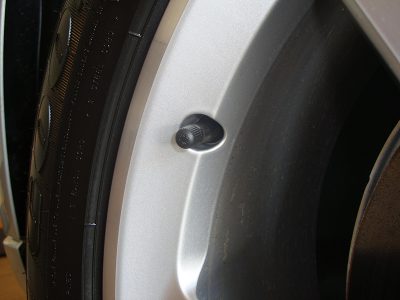
Most Volkswagen vehicles use the direct sensor system. Each wheel has its own sensor to indicate the inflation pressure. In some models, four sensors are fitted to the road wheels, and there’s no sensor in the spare. If you have a TPMS warning light that you can’t clear, find out if the spare has been mounted to replace a flat tire. This could save hours of wasted diagnostic time. In other cases,    a five-sensor system with a sensor in the spare is used. When correcting tire pressure, don’t forget to check the spare as this might keep the light on. Also note the position of the spare tire. You want to keep the sensor as close to the antenna as possible. While these sensors don’t last forever, they do have some of the latest battery technology in them.
The TPMS sensors of direct systems use lithium-ion batteries. They are designed to last 10 years under normal circumstances. When the ignition key is turned on, the TPMS system starts to monitor air pressure.
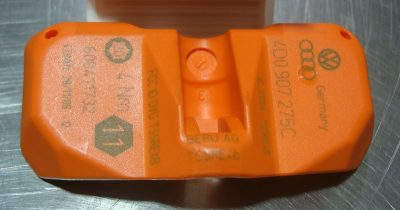
If everything is okay, the sensors go into a low-power mode. This helps conserve battery life. If the tire pressure drops, the sensor wakes up and starts to transmit. The antenna picks up the signal and sends it to the TPMS control module, which communicates this information to the instrument cluster through the CAN system. What does this mean to us? If the CAN is down, the information cannot be sent or received. If you are having trouble resetting the light, look for CAN codes and repair the problem.
In certain Toureg and Phaeton models, a separate TPMS control module (J502) is used. In Jetta models, the five TPMS sensors send their information to the Central Locking and Anti-Theft control module antenna. Through the CAN, these signals are sent to the TPMS module, which is housed inside either the J519 Body Control Module (2010 Jetta, Jetta sportwagen, GTI, Golf, and EOS), or the Comfort and Convenience module.
A sensor will start to transmit data with tire rotation and pressure drop. It won’t begin to transmit with a pressure increase, so adding air will not activate the sensor. To get a sensor to transmit, you will need to drive the vehicle at over 16 mph after correcting the pressures. The tire pressure specs are on a placard taped inside the driver’s door “B†pillar. These are for cold inflation pressures.
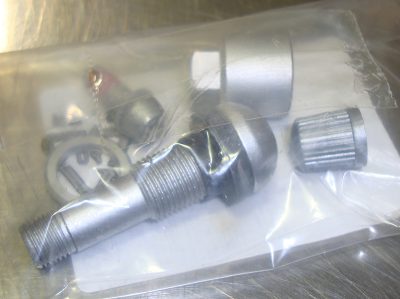
When replacing components, there are some rules you need to follow to do the job right. If the TPMS control unit must be replaced, it will have to be coded to the vehicle. When tires are replaced, be careful not to strike the sensor, which is mounted to the valve stem. If your tire machine rotates counter-clockwise, you should start with the sensor to the left of the bead removal arm so it rotates away from it. During mounting, be sure not force the bead down on the sensor. Do not use any puncture seal or bead sealer while mounting a tire. You can use solid lubricant on the bead, which will not touch the sensor and interfere with its operation.
Remember, in the Jetta, the TPMS control unit is mounted in the Comfort & Convenience module. This will need to be coded to the vehicle if is replaced. On Toureg models, the tire sidewalls are thicker and stiffer, so a stronger RF signal sensor is used. You can tell the sensors apart by four white stars printed on the sensor itself. Even though the sensor battery is supposed to last 10 years, frequent low tire pressure driving will shorten its life. It’s best to advise customers to fix whatever slow leak is present and not drive around with the light on for long periods of time. Also, let them know that proper inflation pressure will give them the best gas mileage.
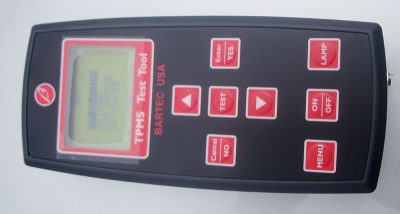
There are several ways to find out if a sensor is functioning properly. The BRT-DBL4 is the Volkswagen factory tool that reads the sensors’ RF signals (there is no VAG number on this tool). There are also aftermarket tools available that detect the frequency generated by the wheel speed sensors when they are transmitting. Simply lower the tire pressure by 6-7 psi and hold the tool against the sidewall closest to the valve stem. It should pick up the signals from the sensor. If not, the sensor may be dead. If any of the sensors have to be replaced, make sure the vehicle has been parked for at least 20 minutes, then driving it at more than 16 mph for seven minutes. The 20-minute wait puts the computer into learn mode. The sensors will transmit their identification numbers, air pressure, temperature, and wheel velocity. Volkswagen presently uses sensors that transmit at 315Mhz.
Finally…
Although many techs have complained about the complexities of TPMS systems, they are really not that difficult. An authorized Volkswagen dealer’s parts department can provide you with OEM valve stems, wheel sensors, antennas, and control units that are engineered for the vehicle, giving you the peace of mind of knowing the job was done right.
Download PDF
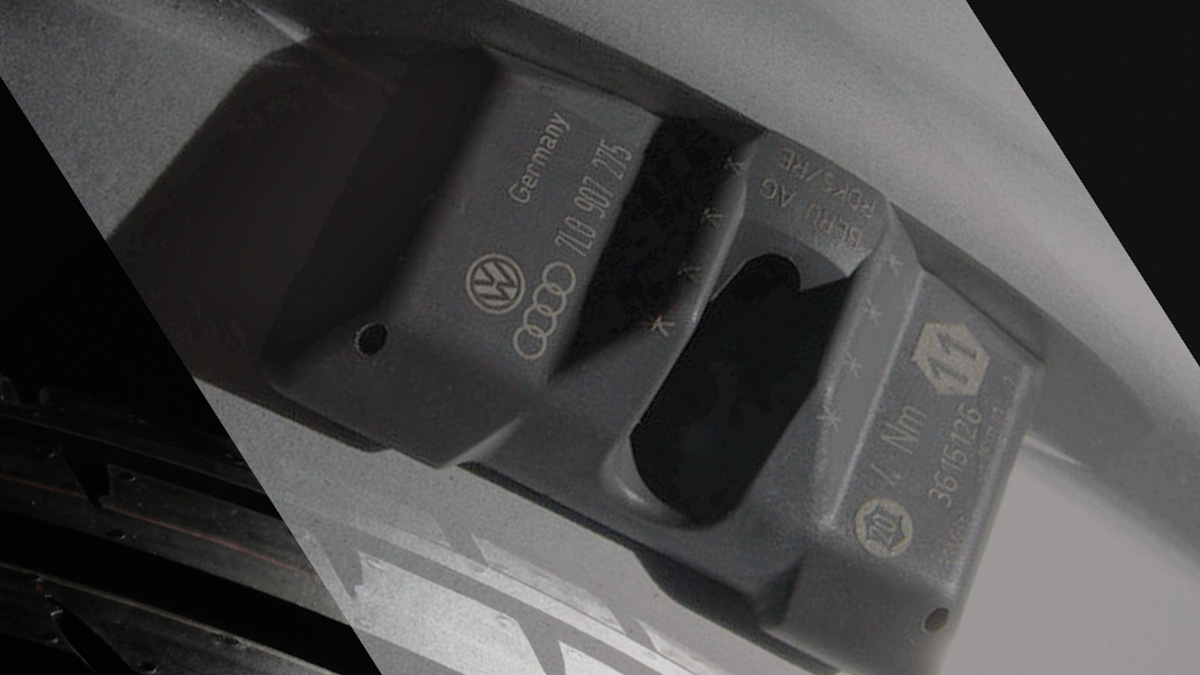



0 Comments